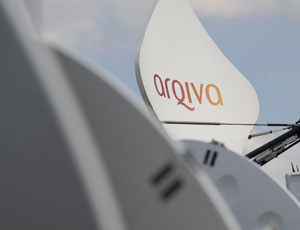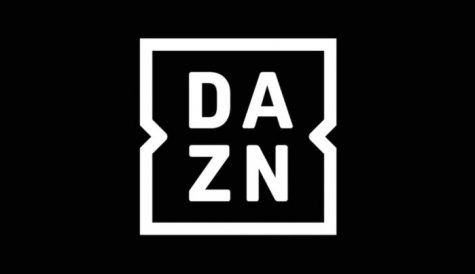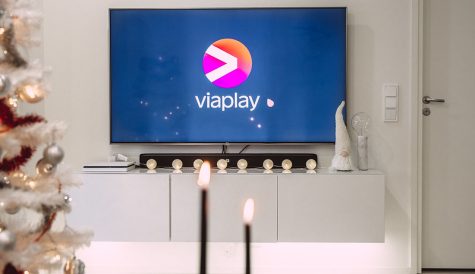
After more than 40 years of operation, DTVE is closing its doors and our website will no longer be updated daily. Thank you for all of your support.
Special occasions
Major sports events like this year’s World Cup place huge demands on global satellite capacity. To what extent does this mirror the occasional use market as a whole? Graham Pomphrey reports.
“This year’s World Cup was the largest event in terms capacity demand that I have ever witnessed,” says Samantha McCloskey, vice president of global occasional use and special events for SES World Skies.
She was talking about a tournament, which along with the Olympics is a global sports event the scale of which are incomparable with anything else: four years ago, the World Cup, which was held in Germany, saw 376 channels broadcasting the event to a total cumulative television audience of 26.29 billion in 214 countries, according to football governing body FIFA. This year, the host broadcaster Host Broadcasting Services, was expected to produce 22,750 hours of feed. Statistics aside, the demand for content from major sports tournaments is massive. While broadcasters are keen to deliver as much coverage as possible, satellite operators and broadcast services providers are wary of balancing the demand for full time capacity from regular customers with the needs of short term and OU capacity.
SES World Skies played a key role in this year’s World Cup, delivering coverage for Eurovision, a division of the European Broadcasting Union. The operator had sold all capacity for the tournament by December, something McCloskey says was “frustrating but not very surprising”. However, it was also able to use the capacity of a satellite in transit for extra coverage during the tournament as NSS-5, which had been replaced, was moved into a slot covering EMEA in time for the start of the tournament.
 Four Eutelsat satellites were also involved in live coverage of the World Cup. Most of its customers for the tournament already had – and still have – permanent leases on Eutelsat capacity. “It was more a question of reinforcing existing capacity,” says Francesco Cataldo, director of resources management. The operator provided 350MHz of additional capacity on an occasional use basis during the 30 days of the event, in addition to permanent leases.
Four Eutelsat satellites were also involved in live coverage of the World Cup. Most of its customers for the tournament already had – and still have – permanent leases on Eutelsat capacity. “It was more a question of reinforcing existing capacity,” says Francesco Cataldo, director of resources management. The operator provided 350MHz of additional capacity on an occasional use basis during the 30 days of the event, in addition to permanent leases.
Intelsat also had a major presence at the tournament. As well as moving a satellite over South Africa for the duration of the tournament, the operator deployed 16 personnel in the country to assist with the huge demand for capacity. Like SES, Intelsat’s, IS-709 satellite was en route to a new location during the summer, meaning the operator could temporarily locate it over South Africa during the tournament and offer additional capacity that it may not otherwise have been able to offer. The operator used a further 10 satellites to broadcast footage, giving it a total of over 900MHz of capacity to deliver coverage to broadcasters in Latin America, Asia and Europe. Despite this, Intelsat’s vice-president of media product management Tim Jackson readily admits that there was a deficit of capacity: “We did a great job – having IS-709 really helped – but we could have done with more capacity.”
One of Intelsat’s main customers for the World Cup was broadcast services provider GlobeCast, which had 20 rights-holder clients, along with a number of non-rights holders broadcasting news and coverage from South Africa. “There was a lot of demand for satellite capacity and there was a shortage of supply. It wasn’t easy – we had certain clients that didn’t know how much capacity would be available until a couple of weeks before the tournament,” says global head of contribution Simon Farnsworth. “There is always a consideration in the OU market that if a full-time video or data customer comes to a satellite operator and says they want a transponder for five years, it’s a no brainer to give it to them. It’s great business for the operators so why would they want to save that capacity to use for six weeks?”
Some broadcast service providers have taken to leasing entire transponders on a long-term basis rather than being at the mercy of satellite operators at the time of major events, when capacity can be scarce and providers are only willing to commit relatively close to the start of the event. One of them, UK-based Arqiva, carried ESPN’s coverage of the World Cup. “The demands of a world cup are huge but typically a satellite operator is not going to be able to commit to OU capacity more than six months ahead of a big event. Prior to that people can get a bit nervous,” says Malcolm Campbell, commercial director, Arqiva Satellite & Media.
Arqiva holds a number of transponders, based on guaranteed business from committed customers and as a speculative measure on the basis that extra business will become available. It also takes out commitment deals with satellite providers where the company guarantees to provide a certain number of hours of their inventory over the course of a year. “We’ve got a number of contracts for distributing big sports events and there’s also a regular churn of ad hoc events that crop up,” says Campbell. “If you buy [capacity] for a long period of time it attracts discounts. Also, to get the right capacity for distribution, you have to commit to it on a long term basis – otherwise it will be sold to someone who’s buying it for full-time TV services. For example, we do a lot of distribution of the Premier League, particularly into eastern Europe and the Middle East. If you don’t have the right capacity to get to those countries, you’re never going to secure the business. Satellite operators don’t tend to have that kind of capacity readily available so we like to make a long-term commitment to ensure we get it.”
OU business cases
While the OU business is never likely to be a major revenue generator for satellite operators compared with long term deals, it is, nonetheless, an efficient use of any spare satellite capacity. It can also act as a value-add and marketing tool, says McCloske: “Our OU business can be very useful to broadcasters that do not necessarily want full time capacity and if you can help them they will remember you. We act as the face of the company to customers that aren’t yet full time.”
Eutelsat launched five new satellites in 2008 and 2009, because of the strong demand from its video and broadband markets. Despite the increase in capacity, it recognised a fill rate of 87.5% as of June 30 on its whole fleet. However, according to Cataldo, the operator does not want to be in a position where it has leased all of its available capacity: “We want enough flexibility to respond to the needs of our clients, including occasional requests for capacity, in particular for the coverage of major international sporting events. We believe that the optimum rate of utilisation of our fleet is around 85%, enabling us to manage efficiently both permanent and occasional use.”
According to Ori Onn, senior vice-president sales and marketing for Israel-based satellite operator Spacecom, occasional use services are important to operators because these types of deals are often drivers for future, more long term deals. “We provide OU as a complementary service to our permanent clients,” he says. “Though a majority of our business is based on serving long-term clients, we also set our sights on providing service and operations to the OU market. Change is inherent in our business and often we see that OU deals presage new trends in the market, thus it is of the utmost importance to be a part of this market.”
[icitspot id=”9253″ template=”box-story”]
The majority of capacity on Spacecom’s Amos-2 and Amos-3 satellites at 4° West is for long-term clients, and Onn describes the available capacity for OU services as “steady and limited”. However, in 2011, Spacecom plans to launch the Amos-5 platform at 17° East, which will increase its overall OU capacity, particularly for Africa, where Onn says the company is seeing a surge in demand for OU services.
Intelsat’s Jackson agrees that while OU services might not compete with full-term leasing in terms of revenue, they are an important strategic part of its media services business. “We are a full broadcast services provider, so not only doing full time distribution and contribution, but also helping out for various events.” Ultimately, he says, OU is a great way to use any spare capacity: “There’s certainly not a compelling reason to just block off capacity for OU in the hope that something will happen, but it’s an incredibly good use of spare capacity. It works well for everybody – and will remain a critical part of our business.”
Nordic satellite operator Telenor Satellite Broadcasting (TSBc) prides itself on being “one of the few service providers or satellite operators who dedicate a significant amount of satellite space for occasional use services,” according to Emma Harris, business division director, occasional services. The company has seen an increase in demand for OU HD services as well as a general boost in OU capacity sales due to the “lack of other OU capacity available in the market”, Harris explains, although this seems to be levelling off slightly as more services, particularly for HD, switch to fibre.
TSBc is anticipating an increase in demand for OU capacity, especially for live sports. “However, this will be mitigated by requests for smaller bandwidths for other news applications. Also, we will possibly see more full-time time leases for OU traffic, allowing customers to manage the bandwidth themselves,” says Harris. The amount of dedicated OU capacity on TSBc’s own satellites has remained constant for the past eight years and the company has also purchased external leases on third party satellites to keep up with demand, she adds.
World Cup tournaments aside, the industry is in agreement that sport will continue to drive OU demand. “Sport is an international language and people are much more engaged with it than they were in the past. For example, in Brazil you’ll see tens of live European soccer matches broadcast over the weekend and in Japan you’ll see basketball from the US,” says McCloskey.
While demand for sports coverage continues to grow, demand for ad hoc capacity for news stories could start to decline as IP technologies become better suited for use in the field. “The news business in terms of satellite and fibre delivery has decreased over the last few years due to the influx of various IP technologies where you can send video files over the internet via FTP or other file protocols,” says GlobeCast’s Farnsworth.
The 3D effect
Demand for capacity from South Africa was unsurprisingly boosted by the almost universal delivery of the tournament in high-definition. While HD take-up across the world might be increasing, faster in some areas than others, sports events have always led the way for this technology. The same is likely for 3D TV, which was one of the key technology highlights of the World Cup. Eutelsat delivered a number of matches in 3D to cinemas in 19 countries, including France, Germany, Italy, Spain, Russia, Poland, the Nordic countries and the Baltic states. The satellite operator calculated that over 250 hours of 3D transmissions would have been transported by its satellites by the time the tournament ended on July 11. Signals were broadcast in Europe through its Atlantic Bird 3 and W7 satellites, using 40Mbps of throughput. The content was delivered by GlobeCast to Eutelsat’s teleport near Paris, where it was retransmitted to Atlantic Bird 3 for western and central Europe.
 While some will regard 2010 as the ‘year of 3D’ the impact this technology will have on occasional use providers remains questionable, partly because of the limited take-up of the service, but also because the amount of capacity required to deliver 3D feeds is not dissimilar to that required for HD. “When you’ve encoded video in a side-by-side format and created a single HDSDI stream, it’s very similar to HD, ” says GlobeCast’s Farnsworth.
While some will regard 2010 as the ‘year of 3D’ the impact this technology will have on occasional use providers remains questionable, partly because of the limited take-up of the service, but also because the amount of capacity required to deliver 3D feeds is not dissimilar to that required for HD. “When you’ve encoded video in a side-by-side format and created a single HDSDI stream, it’s very similar to HD, ” says GlobeCast’s Farnsworth.
Intelsat’s Jackson agrees: “We’re very supportive of the technology and we’re certainly going to be able to support 3D in any format but I don’t really see it’s going to be earth-shattering in terms of demand [for capacity].”
The growth of HD services in particular has seen an increase in video traffic for occasional use services, which is being aided by the development of new satellites and, more recently of fibre networks. As fibre networks began to develop across the globe, the natural reaction was to see it as a threat to satellite in terms of video transportation. “[Broadcasters] appreciate the improved performance, access to significant capacity and ease of booking,” says Steve Collett product manager, media connect and OU for fibre network operator TeliaSonera International Carrier. “The huge reserves of capacity also means that customers are able to sign up new rights with confidence that they can contribute easily and avoid the potential capacity bottlenecks in satellite delivery. This capacity also easily enables HD delivery at bandwidths of 100Mbps or more and in some cases at uncompressed 1.5Gbps levels.”
Although fibre was available in South Africa during this year’s World Cup tournament, there were various reports of its unreliability with some outages taking place. According SES World Skies’ McCloskey, the tournament demonstrated that fibre, especially from “exotic locations” can still be fairly erratic. For that reason, she says, satellite is necessary to ensure reliable delivery of services and, naturally, for distributing video over wide areas. “It is however of increasing concern for satellite that when major event venues are located in areas where substantial terrestrial infrastructure is available, increasingly broadcasters, organisers and rights holders employ the use of terrestrial solutions vis-à-vis satellite as the primary solution. It is the case in Europe and the USA where satellite is used only when many eligible broadcasters are to receive,” she says. Despite this situation, in the US, where fibre connects all but the most remote venues and outlying network stations, fibre transmissions for live unplanned events, especially news, is reported as becoming ever more unstable for two reasons, according to McCloskey. First, she says, no matter how many layers of diversity you build into a fibre network, if they all come down to a single thread for the last mile you lose that benefit: “If that gets cut the service is out. The last mile company is critical.” Second, there are an increasing number of multiple layers of ownership of fibres in the networks and multiple switches and handoffs at intermediary points being handled by those different operators and therefore potentially subject to operator or equipment error. “Therefore, satellite is increasingly being used by major US broadcasters, sometimes for months at a time, to backup failed fibre paths on US domestic circuits.”
Intelsat’s Jackson believes fibre and satellite can complement each other, with neither technology likely to usurp the other. The satellite operator operates its own fibre network with teleports and PoPs in various locations across the globe. “We really didn’t see any reduction in the demand for satellite capacity [at the World Cup]. There seems to be plenty of demand for both services. I don’t think it will ever be the case that one will replace the other – they are complementary,” he says.
The pros and cons of fibre and satellite capacity differ, depending on the type of delivery required by broadcasters, according to Arqiva’s Campbell. “In the contribution world where you’re going from point to point, fibre is likely to be a big factor. People can buy a full time path back to another city very inexpensively compared to satellite,” he says. “However, in the distribution world, where you’re trying to get to multiple receivers, satellite is always going to be the way to do it because of the reach and the fact you can switch people on and off according to demand. You don’t have the same flexibility with fibre.”
Fibre is likely to play a much greater role during the 2012 Olympic Games, which will be held in London. But such is the scale of the event that OU providers will be aware that a combination of satellite and fibre will be required to deliver the tournament across the globe. Despite the games taking place in a little under two years, operators are busy making preliminary plans for an event that is likely to be the most watched sporting event until the Brazil World Cup in 2014.
“For every World Cup and Olympics, the planning starts before the other one finishes,” says Arqiva’s Campbell. Four years may seem like a long time. But while it’s difficult to be sure of demand, and how much capacity will be available, OU operators are acutely aware that that the Olympics are likely to be delivered to more broadcasters than ever, offering feeds on more devices than ever. In the world of occasional use, there’s no time to relax.


